A
Auto Express
Guest
Nissan has released a new teaser video confirming the new 2021 Qashqai will make its debut on 18th February. The Mk1 Nissan Qashqai variant helped popularise the crossover segment back in 2007, but the growth of the sector means the new car will face a broad range of competitors, including the SEAT Ateca, the Ford Kuga and the new Hyundai Tucson.
Nissan hopes to keep ahead of the competition by loading the new Qashqai with clever technology, repackaging the car’s cabin for a little extra space and introducing its innovative e-Power hybrid system to the crossover’s line-up. The first examples will reach UK buyers later this year.
The Japanese brand’s latest teaser offered a glimpse at the Qashqai’s new nine-inch infotainment system, which will come pre-loaded with a host of connected services, such as fuel price comparison data, live traffic information and a speed camera location service, provided by TomTom.
It’ll be joined by a customisable 12.3-inch digital instrument cluster and a 10.8-inch head-up display, which can provide information on speed, navigation and driver assistance systems. Nissan even drafted in the Japanese game developer, Bandai Namco, to design the Qashqai’s various warning sounds, such as its seat belt reminder.
Nissan recently gave us an in-depth look at the third-generation Qashqai’s interior. The firm promised the new car will offer more practicality and better packaging, all within a body shell that’s only marginally larger than the previous car’s.
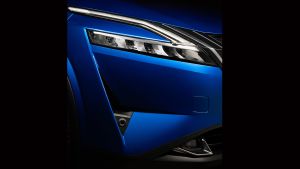
Nissan Qashqai teaser
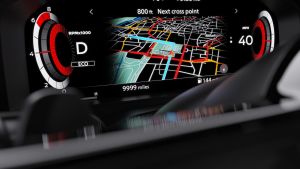
New Nissan Qashqai - interior 2
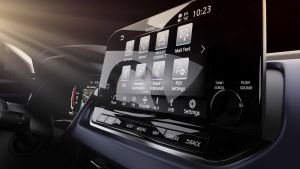
New Nissan Qashqai - interior 3
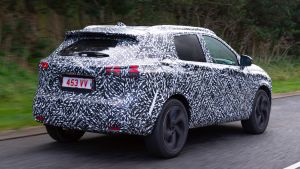
New Nissan Qashqai - spyshot 2
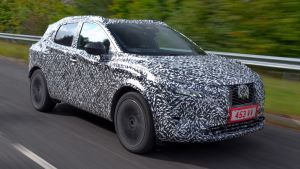
New Nissan Qashqai - spyshot
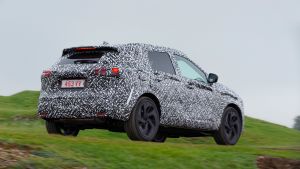
New Nissan Qashqai - spyshot 7

New Nissan Qashqai - interior 8
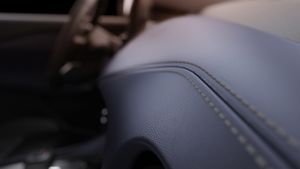
New Nissan Qashqai - interior 7

New Nissan Qashqai - exclusive image rear
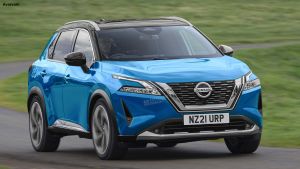
New Nissan Qashqai - exclusive image front
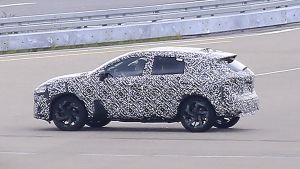
New Nissan Qashqai - spyshot 19
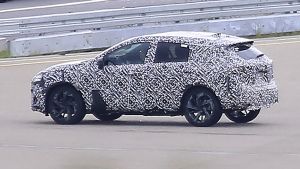
New Nissan Qashqai - spyshot 18

New Nissan Qashqai - spyshot 10

New Nissan Qashqai - spyshot 17
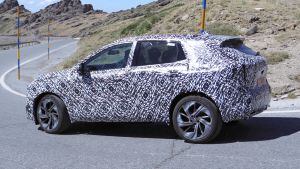
New Nissan Qashqai - spyshot 13

Nissan Qashqai teaser
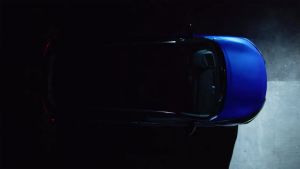
Nissan Qashqai teaser
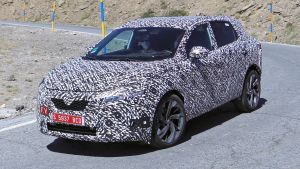
New Nissan Qashqai - spyshot 9
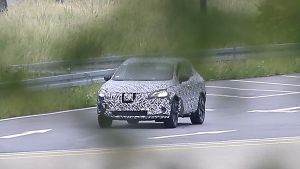
New Nissan Qashqai - spyshot 15
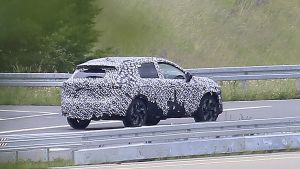
New Nissan Qashqai - spyshot 21
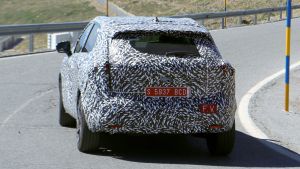
New Nissan Qashqai - spyshot 12
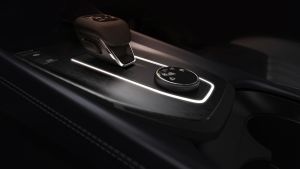
New Nissan Qashqai - interior 4
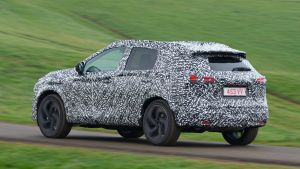
New Nissan Qashqai - spyshot 6
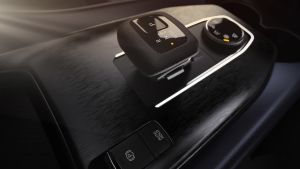
New Nissan Qashqai - interior 5

New Nissan Qashqai - spyshot 3

New Nissan Qashqai - spyshot 5

New Nissan Qashqai - spyshot 14
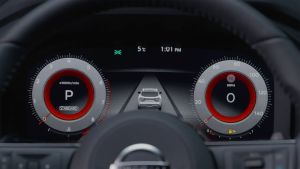
Nissan Qashqai teaser
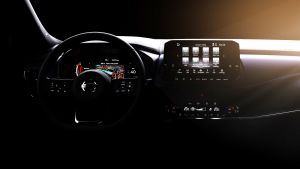
New Nissan Qashqai - interior
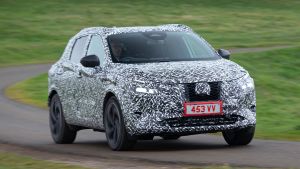
New Nissan Qashqai - spyshot 4
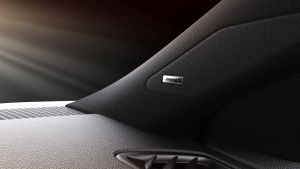
New Nissan Qashqai - interior 6
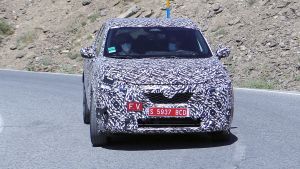
New Nissan Qashqai - spyshot 11
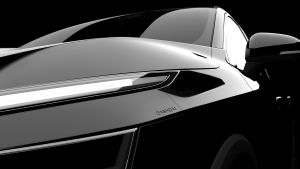
New Nissan Qashqai - spyshot 8
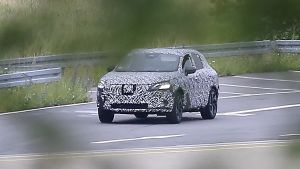
New Nissan Qashqai - spyshot 16
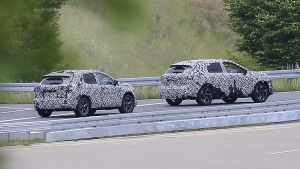
New Nissan Qashqai - spyshot 20

Nissan Qashqai teaser
The new car will be 35mm longer and 30mm wider than its predecessor, which thanks to some clever organisation, has provided 22mm of extra knee room for rear-seat passengers and 28mm more shoulder room for those in the front seats. Front and rear headroom has also improved by around 15mm.
The rest of the cabin is littered with a range of incremental improvements, including cup-holders that are now mounted lower down in the centre console. This gives the driver more room when changing gear. There’s also a new smartphone charging pad in the centre console, which has been designed to fit the largest phones on the market.
From launch, the Qashqai will be available with mild-hybrid petrol power only. The 1.3-litre turbocharged petrol is related to the engine in the current car (albeit with its own internal improvements to improve efficiency), but is now mated to an uprated 12-volt electrical system, known as Nissan’s Advanced Lithium-ion battery System.
ALiS weighs just 22kg, and recuperates energy otherwise lost under braking. This energy can then be deployed in the form of a modest 6Nm torque boost under acceleration for up to 20 seconds at a time. Combined with a stop/start system that cuts the engine from 11mph when coasting to a halt, the system has helped to reduce CO2 emissions by 4g/km.
The revised 1.3 turbo unit will be available with either 138bhp or 156bhp. Both models will come with front-wheel drive and a six-speed manual gearbox as standard, while the higher-power unit is also available with a CVT automatic gearbox and four-wheel drive.

Nissan Qashqai teaser

New Nissan Qashqai - interior 2

New Nissan Qashqai - interior 3

New Nissan Qashqai - spyshot 2

New Nissan Qashqai - spyshot

New Nissan Qashqai - spyshot 7

New Nissan Qashqai - interior 8

New Nissan Qashqai - interior 7

New Nissan Qashqai - exclusive image rear

New Nissan Qashqai - exclusive image front

New Nissan Qashqai - spyshot 19

New Nissan Qashqai - spyshot 18

New Nissan Qashqai - spyshot 10

New Nissan Qashqai - spyshot 17

New Nissan Qashqai - spyshot 13

Nissan Qashqai teaser

Nissan Qashqai teaser

New Nissan Qashqai - spyshot 9

New Nissan Qashqai - spyshot 15

New Nissan Qashqai - spyshot 21

New Nissan Qashqai - spyshot 12

New Nissan Qashqai - spyshot 6

New Nissan Qashqai - interior 5

New Nissan Qashqai - interior 4

New Nissan Qashqai - spyshot 3

New Nissan Qashqai - spyshot 5

New Nissan Qashqai - spyshot 14

Nissan Qashqai teaser

New Nissan Qashqai - interior

New Nissan Qashqai - spyshot 4

New Nissan Qashqai - interior 6

New Nissan Qashqai - spyshot 11

New Nissan Qashqai - spyshot 8

New Nissan Qashqai - spyshot 16

New Nissan Qashqai - spyshot 20

Nissan Qashqai teaser
Next year, Nissan will introduce its e-Power hybrid system to the Qashqai range. It combines a 1.5-litre petrol engine with an electric motor, though in a different way to most hybrids on the market. Here, the 155bhp petrol engine doesn’t drive the wheels directly – instead, it charges a battery which supplies an electric motor producing 188bhp and 330Nm of torque.
Nissan says this configuration brings several advantages. With the electric motor driving the wheels alone, the Qashqai will benefit from the instant throttle response of an EV. This also means that Nissan has been able to tune the 1.5 petrol unit to operate at its most efficient when topping up the battery, meaning that it has the potential to deliver even better fuel economy.
The powertrain will also feature e-Pedal – a system lifted from the Nissan Leaf EV. The technology will allow Qashqai e-Power drivers to make use of one pedal driving; when they release the accelerator, the powertrain can provide up to 0.2G of regenerative deceleration without any need to touch the brake pedal.
As Nissan has previously confirmed, diesel will no longer feature in the Qashqai’s engine family. A plug-in hybrid version of the Qashqai won’t be coming, either, with Nissan instead prioritising e-Power tech and all-electric vehicles, such as the new Ariya, the Qashqai’s slightly larger electric sibling.
Nissan has also improved practicality with the new Qashqai by enlarging the boot; the outgoing Qashqai lagged behind its competitors, but the new car’s slightly larger body means there’s now 504 litres of luggage space on offer, which is an increase of 74 litres over the Mk2 Qashqai.
The old Qashqai’s versatile luggage boards have also been retained across the generation change – but now they’re reversible. One side is trimmed to match the carpet in the SUV’s boot, while the other features a wipe-down plastic coating, which Nissan says will make the boot floor easier to clean.

New Nissan Qashqai - interior 2

New Nissan Qashqai - interior 3

New Nissan Qashqai - spyshot 2

New Nissan Qashqai - spyshot

New Nissan Qashqai - spyshot 7

New Nissan Qashqai - interior 8

New Nissan Qashqai - interior 7

Nissan Qashqai teaser

New Nissan Qashqai - exclusive image rear

New Nissan Qashqai - exclusive image front

New Nissan Qashqai - spyshot 17

New Nissan Qashqai - spyshot 13

New Nissan Qashqai - spyshot 18

New Nissan Qashqai - spyshot 10

New Nissan Qashqai - spyshot 19

Nissan Qashqai teaser

Nissan Qashqai teaser

New Nissan Qashqai - spyshot 9

New Nissan Qashqai - spyshot 15

New Nissan Qashqai - spyshot 21

New Nissan Qashqai - spyshot 12

New Nissan Qashqai - spyshot 6

New Nissan Qashqai - interior 5

New Nissan Qashqai - interior 4

New Nissan Qashqai - spyshot 3

New Nissan Qashqai - spyshot 5

New Nissan Qashqai - spyshot 14

Nissan Qashqai teaser

New Nissan Qashqai - interior

New Nissan Qashqai - spyshot 4

New Nissan Qashqai - interior 6

New Nissan Qashqai - spyshot 11

New Nissan Qashqai - spyshot 8

New Nissan Qashqai - spyshot 16

New Nissan Qashqai - spyshot 20

Nissan Qashqai teaser
Many of the Qashqai’s improvements have been made possible by the shift to a new platform, as the latest model will move onto the Renault-Nissan-Mitsubishi Alliance’s CMF-C architecture.
It’s an updated version of the current vehicle’s underpinnings, which uses more ultra-high-strength steel than before, yet it’s also lighter, better at absorbing impacts in a crash and 41 per cent stiffer.
Nissan says that drivers will feel these changes behind the wheel because, alongside the improvements to comfort, safety and technology, the brand’s engineers are working on ways to make the next Qashqai better to drive than its predecessor.
So, it’ll feature new MacPherson struts for the suspension at the front and rear – both of which will have reprofiled damper settings that are designed to offer a good compromise between handling and comfort. All-wheel-drive versions will feature multi-link rear suspension in place of a torsion beam, and Nissan has worked on the car’s steering system, claiming improved responsiveness.
Few cars have made such an impact on a brand’s fortunes as the Qashqai has for Nissan. Since its launch in 2007 the brand has sold more than three million across Europe, and last year sales of the Mk2 model still stood at 235,000 units across the continent.
The new Qashqai will also be a hugely important car for the UK automotive industry. Since its introduction, the SUV has been at Nissan’s Sunderland plant, and the car’s production volume outweighs any other car currently made in Britain. This Mk3 version will be on home shores, too, as part of a £400 million investment in the Sunderland factory.

Nissan Qashqai teaser

New Nissan Qashqai - interior 2

New Nissan Qashqai - interior 3

New Nissan Qashqai - spyshot 2

New Nissan Qashqai - spyshot

New Nissan Qashqai - spyshot 7

New Nissan Qashqai - interior 8

New Nissan Qashqai - interior 7

New Nissan Qashqai - exclusive image rear

New Nissan Qashqai - exclusive image front

New Nissan Qashqai - spyshot 19

New Nissan Qashqai - spyshot 18

New Nissan Qashqai - spyshot 10

New Nissan Qashqai - spyshot 17

New Nissan Qashqai - spyshot 13

Nissan Qashqai teaser

Nissan Qashqai teaser

New Nissan Qashqai - spyshot 9

New Nissan Qashqai - spyshot 15

New Nissan Qashqai - spyshot 21

New Nissan Qashqai - spyshot 12

New Nissan Qashqai - spyshot 6

New Nissan Qashqai - interior 5

New Nissan Qashqai - interior 4

New Nissan Qashqai - spyshot 3

New Nissan Qashqai - spyshot 5

New Nissan Qashqai - spyshot 14

Nissan Qashqai teaser

New Nissan Qashqai - interior

New Nissan Qashqai - spyshot 4

New Nissan Qashqai - interior 6

New Nissan Qashqai - spyshot 11

New Nissan Qashqai - spyshot 8

New Nissan Qashqai - spyshot 16

New Nissan Qashqai - spyshot 20

Nissan Qashqai teaser
Described as the man responsible for “driving the future line-up” for Nissan’s European operations, Fioravanti’s job is to determine what cars the manufacturer sells.
Q: Why have you decided to drop diesel power for the next-generation Qashqai?
A: “In the region we have already communicated our intention to progressively discontinue the diesel offering in line with the renewal of our models. With e-Power, we are overly confident that our customers will be much more seduced by this offer. We can definitely convert with this offer.”
Q: Why did you decide against introducing a plug-in hybrid version of the new Qashqai for European buyers?
A: “We have within the Alliance the technology, but we are very confident that e-Power technology is going to differentiate us from the rest of the competition.”
Q: Could you be tempted to expand the Qashqai’s horizons into new derivatives, such as coupé-SUVs?
A: “At the moment we don’t see the need. We are very focused on this current concept. The Qashqai is functional and practical, but dynamic. The customer base is already wide.”
Q: Do you intend to introduce a performance version of the latest Qashqai? Could you use the Nismo brand?
A: “I cannot confirm anything to you, but the Qashqai is our key model in Europe and we are not closing any doors. The life cycle is going to be long and we have a lot of good intention and ability within Nissan; we are enthusiastic because this is not the end of the story. I’m pretty sure we are going to surprise you in the future.”
Keen to find out more about electrification? Get the latest electric car news and reviews on our sister site, DrivingElectric.com…
Continue reading...
Nissan hopes to keep ahead of the competition by loading the new Qashqai with clever technology, repackaging the car’s cabin for a little extra space and introducing its innovative e-Power hybrid system to the crossover’s line-up. The first examples will reach UK buyers later this year.
- SEE MORE Best mid-size SUVs on sale 2021
The Japanese brand’s latest teaser offered a glimpse at the Qashqai’s new nine-inch infotainment system, which will come pre-loaded with a host of connected services, such as fuel price comparison data, live traffic information and a speed camera location service, provided by TomTom.
It’ll be joined by a customisable 12.3-inch digital instrument cluster and a 10.8-inch head-up display, which can provide information on speed, navigation and driver assistance systems. Nissan even drafted in the Japanese game developer, Bandai Namco, to design the Qashqai’s various warning sounds, such as its seat belt reminder.
Nissan recently gave us an in-depth look at the third-generation Qashqai’s interior. The firm promised the new car will offer more practicality and better packaging, all within a body shell that’s only marginally larger than the previous car’s.

Nissan Qashqai teaser

New Nissan Qashqai - interior 2

New Nissan Qashqai - interior 3

New Nissan Qashqai - spyshot 2

New Nissan Qashqai - spyshot

New Nissan Qashqai - spyshot 7

New Nissan Qashqai - interior 8

New Nissan Qashqai - interior 7

New Nissan Qashqai - exclusive image rear

New Nissan Qashqai - exclusive image front

New Nissan Qashqai - spyshot 19

New Nissan Qashqai - spyshot 18

New Nissan Qashqai - spyshot 10

New Nissan Qashqai - spyshot 17

New Nissan Qashqai - spyshot 13

Nissan Qashqai teaser

Nissan Qashqai teaser

New Nissan Qashqai - spyshot 9

New Nissan Qashqai - spyshot 15

New Nissan Qashqai - spyshot 21

New Nissan Qashqai - spyshot 12

New Nissan Qashqai - interior 4

New Nissan Qashqai - spyshot 6

New Nissan Qashqai - interior 5

New Nissan Qashqai - spyshot 3

New Nissan Qashqai - spyshot 5

New Nissan Qashqai - spyshot 14

Nissan Qashqai teaser

New Nissan Qashqai - interior

New Nissan Qashqai - spyshot 4

New Nissan Qashqai - interior 6

New Nissan Qashqai - spyshot 11

New Nissan Qashqai - spyshot 8

New Nissan Qashqai - spyshot 16

New Nissan Qashqai - spyshot 20

Nissan Qashqai teaser
The new car will be 35mm longer and 30mm wider than its predecessor, which thanks to some clever organisation, has provided 22mm of extra knee room for rear-seat passengers and 28mm more shoulder room for those in the front seats. Front and rear headroom has also improved by around 15mm.
The rest of the cabin is littered with a range of incremental improvements, including cup-holders that are now mounted lower down in the centre console. This gives the driver more room when changing gear. There’s also a new smartphone charging pad in the centre console, which has been designed to fit the largest phones on the market.
Engines and drivetrains
From launch, the Qashqai will be available with mild-hybrid petrol power only. The 1.3-litre turbocharged petrol is related to the engine in the current car (albeit with its own internal improvements to improve efficiency), but is now mated to an uprated 12-volt electrical system, known as Nissan’s Advanced Lithium-ion battery System.
ALiS weighs just 22kg, and recuperates energy otherwise lost under braking. This energy can then be deployed in the form of a modest 6Nm torque boost under acceleration for up to 20 seconds at a time. Combined with a stop/start system that cuts the engine from 11mph when coasting to a halt, the system has helped to reduce CO2 emissions by 4g/km.
The revised 1.3 turbo unit will be available with either 138bhp or 156bhp. Both models will come with front-wheel drive and a six-speed manual gearbox as standard, while the higher-power unit is also available with a CVT automatic gearbox and four-wheel drive.

Nissan Qashqai teaser

New Nissan Qashqai - interior 2

New Nissan Qashqai - interior 3

New Nissan Qashqai - spyshot 2

New Nissan Qashqai - spyshot

New Nissan Qashqai - spyshot 7

New Nissan Qashqai - interior 8

New Nissan Qashqai - interior 7

New Nissan Qashqai - exclusive image rear

New Nissan Qashqai - exclusive image front

New Nissan Qashqai - spyshot 19

New Nissan Qashqai - spyshot 18

New Nissan Qashqai - spyshot 10

New Nissan Qashqai - spyshot 17

New Nissan Qashqai - spyshot 13

Nissan Qashqai teaser

Nissan Qashqai teaser

New Nissan Qashqai - spyshot 9

New Nissan Qashqai - spyshot 15

New Nissan Qashqai - spyshot 21

New Nissan Qashqai - spyshot 12

New Nissan Qashqai - spyshot 6

New Nissan Qashqai - interior 5

New Nissan Qashqai - interior 4

New Nissan Qashqai - spyshot 3

New Nissan Qashqai - spyshot 5

New Nissan Qashqai - spyshot 14

Nissan Qashqai teaser

New Nissan Qashqai - interior

New Nissan Qashqai - spyshot 4

New Nissan Qashqai - interior 6

New Nissan Qashqai - spyshot 11

New Nissan Qashqai - spyshot 8

New Nissan Qashqai - spyshot 16

New Nissan Qashqai - spyshot 20

Nissan Qashqai teaser
Next year, Nissan will introduce its e-Power hybrid system to the Qashqai range. It combines a 1.5-litre petrol engine with an electric motor, though in a different way to most hybrids on the market. Here, the 155bhp petrol engine doesn’t drive the wheels directly – instead, it charges a battery which supplies an electric motor producing 188bhp and 330Nm of torque.
Nissan says this configuration brings several advantages. With the electric motor driving the wheels alone, the Qashqai will benefit from the instant throttle response of an EV. This also means that Nissan has been able to tune the 1.5 petrol unit to operate at its most efficient when topping up the battery, meaning that it has the potential to deliver even better fuel economy.
The powertrain will also feature e-Pedal – a system lifted from the Nissan Leaf EV. The technology will allow Qashqai e-Power drivers to make use of one pedal driving; when they release the accelerator, the powertrain can provide up to 0.2G of regenerative deceleration without any need to touch the brake pedal.
As Nissan has previously confirmed, diesel will no longer feature in the Qashqai’s engine family. A plug-in hybrid version of the Qashqai won’t be coming, either, with Nissan instead prioritising e-Power tech and all-electric vehicles, such as the new Ariya, the Qashqai’s slightly larger electric sibling.
Boot space
Nissan has also improved practicality with the new Qashqai by enlarging the boot; the outgoing Qashqai lagged behind its competitors, but the new car’s slightly larger body means there’s now 504 litres of luggage space on offer, which is an increase of 74 litres over the Mk2 Qashqai.
The old Qashqai’s versatile luggage boards have also been retained across the generation change – but now they’re reversible. One side is trimmed to match the carpet in the SUV’s boot, while the other features a wipe-down plastic coating, which Nissan says will make the boot floor easier to clean.

New Nissan Qashqai - interior 2

New Nissan Qashqai - interior 3

New Nissan Qashqai - spyshot 2

New Nissan Qashqai - spyshot

New Nissan Qashqai - spyshot 7

New Nissan Qashqai - interior 8

New Nissan Qashqai - interior 7

Nissan Qashqai teaser

New Nissan Qashqai - exclusive image rear

New Nissan Qashqai - exclusive image front

New Nissan Qashqai - spyshot 17

New Nissan Qashqai - spyshot 13

New Nissan Qashqai - spyshot 18

New Nissan Qashqai - spyshot 10

New Nissan Qashqai - spyshot 19

Nissan Qashqai teaser

Nissan Qashqai teaser

New Nissan Qashqai - spyshot 9

New Nissan Qashqai - spyshot 15

New Nissan Qashqai - spyshot 21

New Nissan Qashqai - spyshot 12

New Nissan Qashqai - spyshot 6

New Nissan Qashqai - interior 5

New Nissan Qashqai - interior 4

New Nissan Qashqai - spyshot 3

New Nissan Qashqai - spyshot 5

New Nissan Qashqai - spyshot 14

Nissan Qashqai teaser

New Nissan Qashqai - interior

New Nissan Qashqai - spyshot 4

New Nissan Qashqai - interior 6

New Nissan Qashqai - spyshot 11

New Nissan Qashqai - spyshot 8

New Nissan Qashqai - spyshot 16

New Nissan Qashqai - spyshot 20

Nissan Qashqai teaser
New Nissan Qashqai platform
Many of the Qashqai’s improvements have been made possible by the shift to a new platform, as the latest model will move onto the Renault-Nissan-Mitsubishi Alliance’s CMF-C architecture.
It’s an updated version of the current vehicle’s underpinnings, which uses more ultra-high-strength steel than before, yet it’s also lighter, better at absorbing impacts in a crash and 41 per cent stiffer.
Nissan says that drivers will feel these changes behind the wheel because, alongside the improvements to comfort, safety and technology, the brand’s engineers are working on ways to make the next Qashqai better to drive than its predecessor.
So, it’ll feature new MacPherson struts for the suspension at the front and rear – both of which will have reprofiled damper settings that are designed to offer a good compromise between handling and comfort. All-wheel-drive versions will feature multi-link rear suspension in place of a torsion beam, and Nissan has worked on the car’s steering system, claiming improved responsiveness.
Few cars have made such an impact on a brand’s fortunes as the Qashqai has for Nissan. Since its launch in 2007 the brand has sold more than three million across Europe, and last year sales of the Mk2 model still stood at 235,000 units across the continent.
The new Qashqai will also be a hugely important car for the UK automotive industry. Since its introduction, the SUV has been at Nissan’s Sunderland plant, and the car’s production volume outweighs any other car currently made in Britain. This Mk3 version will be on home shores, too, as part of a £400 million investment in the Sunderland factory.

Nissan Qashqai teaser

New Nissan Qashqai - interior 2

New Nissan Qashqai - interior 3

New Nissan Qashqai - spyshot 2

New Nissan Qashqai - spyshot

New Nissan Qashqai - spyshot 7

New Nissan Qashqai - interior 8

New Nissan Qashqai - interior 7

New Nissan Qashqai - exclusive image rear

New Nissan Qashqai - exclusive image front

New Nissan Qashqai - spyshot 19

New Nissan Qashqai - spyshot 18

New Nissan Qashqai - spyshot 10

New Nissan Qashqai - spyshot 17

New Nissan Qashqai - spyshot 13

Nissan Qashqai teaser

Nissan Qashqai teaser

New Nissan Qashqai - spyshot 9

New Nissan Qashqai - spyshot 15

New Nissan Qashqai - spyshot 21

New Nissan Qashqai - spyshot 12

New Nissan Qashqai - spyshot 6

New Nissan Qashqai - interior 5

New Nissan Qashqai - interior 4

New Nissan Qashqai - spyshot 3

New Nissan Qashqai - spyshot 5

New Nissan Qashqai - spyshot 14

Nissan Qashqai teaser

New Nissan Qashqai - interior

New Nissan Qashqai - spyshot 4

New Nissan Qashqai - interior 6

New Nissan Qashqai - spyshot 11

New Nissan Qashqai - spyshot 8

New Nissan Qashqai - spyshot 16

New Nissan Qashqai - spyshot 20

Nissan Qashqai teaser
Q&A: Marco Fioravanti - VP product planning, Nissan Europe
Described as the man responsible for “driving the future line-up” for Nissan’s European operations, Fioravanti’s job is to determine what cars the manufacturer sells.
Q: Why have you decided to drop diesel power for the next-generation Qashqai?
A: “In the region we have already communicated our intention to progressively discontinue the diesel offering in line with the renewal of our models. With e-Power, we are overly confident that our customers will be much more seduced by this offer. We can definitely convert with this offer.”
Q: Why did you decide against introducing a plug-in hybrid version of the new Qashqai for European buyers?
A: “We have within the Alliance the technology, but we are very confident that e-Power technology is going to differentiate us from the rest of the competition.”
Q: Could you be tempted to expand the Qashqai’s horizons into new derivatives, such as coupé-SUVs?
A: “At the moment we don’t see the need. We are very focused on this current concept. The Qashqai is functional and practical, but dynamic. The customer base is already wide.”
Q: Do you intend to introduce a performance version of the latest Qashqai? Could you use the Nismo brand?
A: “I cannot confirm anything to you, but the Qashqai is our key model in Europe and we are not closing any doors. The life cycle is going to be long and we have a lot of good intention and ability within Nissan; we are enthusiastic because this is not the end of the story. I’m pretty sure we are going to surprise you in the future.”
Keen to find out more about electrification? Get the latest electric car news and reviews on our sister site, DrivingElectric.com…
Continue reading...
